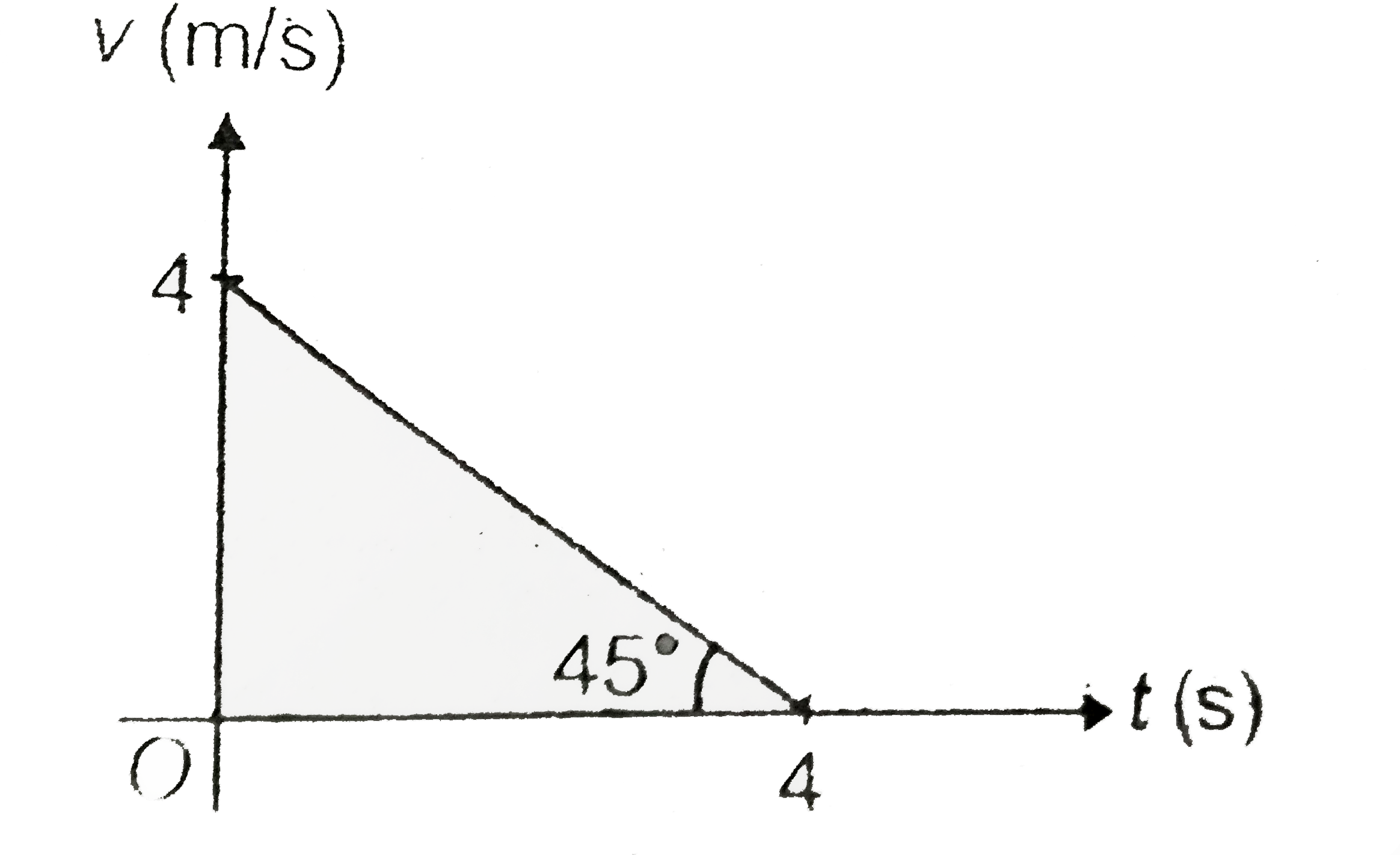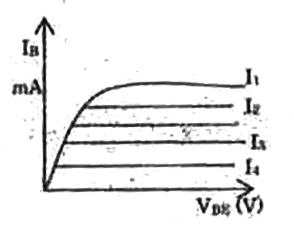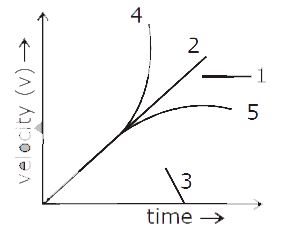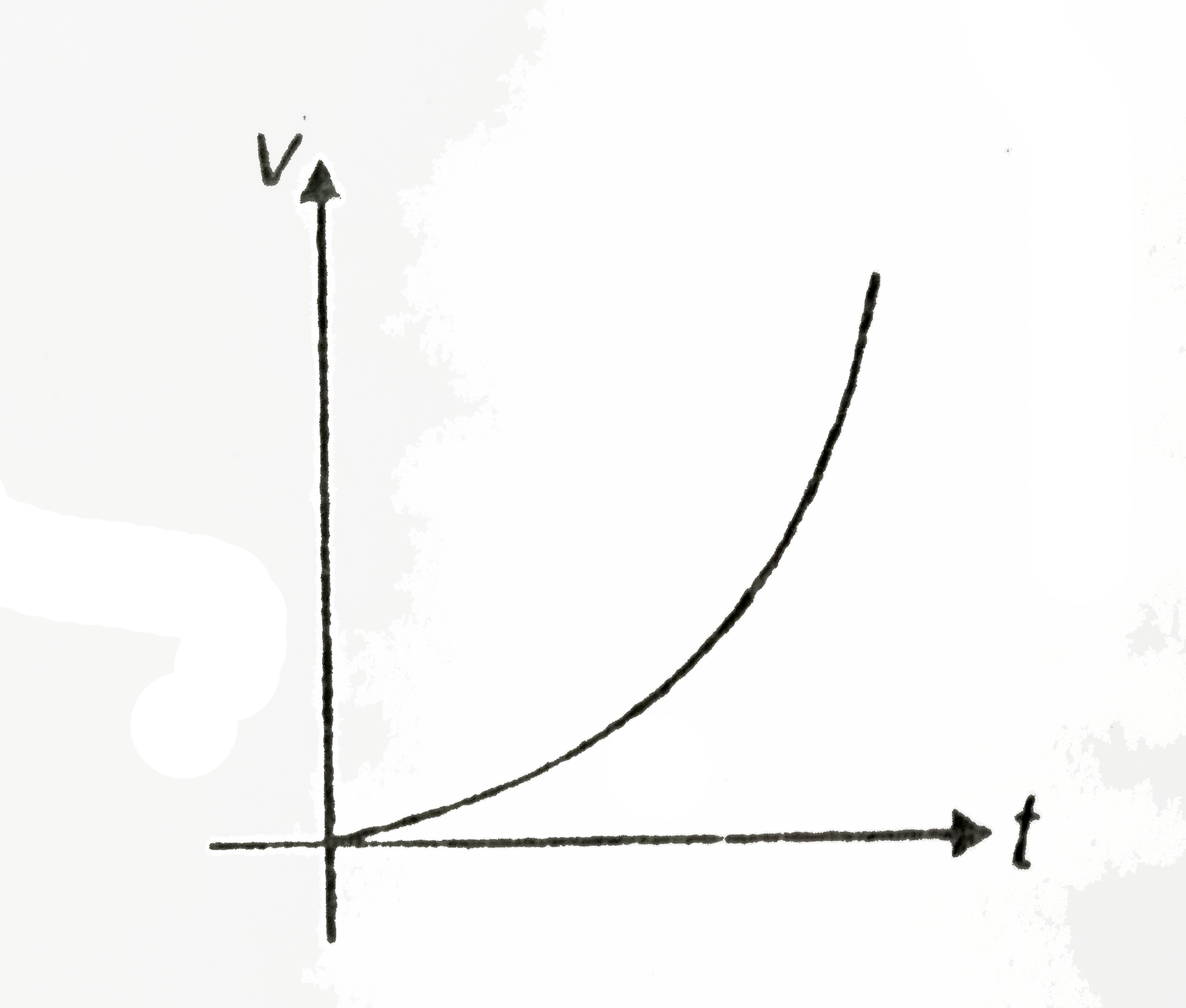Velocity time graph is given. What can be said about acceleration or retardation?

constant acceleration but negative
constant retardation but negative
constant acceleration but positive
constant negative retardation but positive.
The correct Answer is:A
Velocity is increasing so there is Acceleration. Since velocity time graph is straight line the acceleration will be constant. The angle of the line is more than 90∘. Hence slope is negative.
Similar Questions
The velocity-time graph is given below

Draw the acceleration-time graph and position-time graph, given that at t = 0, particle is at origin.View SolutionThe velocity-time graph is given below

Draw the acceleration-time graph and position-time graph, given that at t = 0, particle is at origin.View Solution
Knowledge Check
- Question 1 - Select One
What can be said from graph below?
 AI1+I42=I2+I32BI4>I3>I2>I1CI1>I2>I3>I4DI1×I4=I2×I3
AI1+I42=I2+I32BI4>I3>I2>I1CI1>I2>I3>I4DI1×I4=I2×I3 - Question 2 - Select One
For given velocity time graphs in which case the acceleration is uniform and positive -
 A1B2C3D4
A1B2C3D4 - Question 3 - Select One
Graphs are very useful to represent a physical situation. Various quantities can be easily represented on graphs and other quantites can be determined from the graph. For example the slope of velocity-time graph represents instantaneous acceleration. For a motion with constant acceleration slope of velocity-time graph is constant. If acceleration is changing with time, slope with change and thus velocity-time graph will be a non-linear curve. Further the area of velocity-time graph gives displacement.
For the above situation let t1 be the time of accelerated motion and t2 be the time or retarded motion, then the correct relation isAa1t2=a2t1Ba1t1=a2t2Ca1t21=a2t22Da1t22=a2t21
Graphs are very useful to represent a physical situation. Various quantities can be easily represented on graphs and other quantites can be determined from the graph. For example the slope of velocity-time graph represents instantaneous acceleration. For a motion with constant acceleration slope of velocity-time graph is constant. If acceleration is changing with time, slope with change and thus velocity-time graph will be a non-linear curve. Further the area of velocity-time graph gives displacement.
For the given velocity-time graph the possibly correct acceleration-time relationship is
 View Solution
View SolutionGraphs are very useful to represent a physical situation. Various quantities can be easily represented on graphs and other quantites can be determined from the graph. For example the slope of velocity-time graph represents instantaneous acceleration. For a motion with constant acceleration slope of velocity-time graph is constant. If acceleration is changing with time, slope will change and thus velocity-time graph will be a non-linear curve. Further the area of velocity-time graph gives displacement.
For the given velocity-time graph the possibly correct acceleration-time relationship is
 View Solution
View SolutionGraphs are very useful to represent a physical situation. Various quantities can be easily represented on graphs and other quantites can be determined from the graph. For example the slope of velocity-time graph represents instantaneous acceleration. For a motion with constant acceleration slope of velocity-time graph is constant. If acceleration is changing with time, slope with change and thus velocity-time graph will be a non-linear curve. Further the area of velocity-time graph gives displacement.
The velocity-time graph for two objects P and Q are shown. The ratio of their respective acceleration is
 View Solution
View SolutionGraphs are very useful to represent a physical situation. Various quantities can be easily represented on graphs and other quantites can be determined from the graph. For example the slope of velocity-time graph represents instantaneous acceleration. For a motion with constant acceleration slope of velocity-time graph is constant. If acceleration is changing with time, slope with change and thus velocity-time graph will be a non-linear curve. Further the area of velocity-time graph gives displacement.
The velocity-time graph for two objects P and Q are shown. The ratio of their respective acceleration is
 View Solution
View SolutionGraphs are very useful to represent a physical situation. Various quantities can be easily represented on graphs and other quantites can be determined from the graph. For example the slope of velocity-time graph represents instantaneous acceleration. For a motion with constant acceleration slope of velocity-time graph is constant. If acceleration is changing with time, slope with change and thus velocity-time graph will be a non-linear curve. Further the area of velocity-time graph gives displacement.
For the above situation let t1 be the time of accelerated motion and t2 be the time or retarded motion, then the correct relation isView Solution

